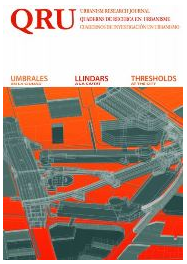Los bordes de la ciudad metropolitana: apuntes para repensar la ciudad
DOI:
https://doi.org/10.5821/qru.9552Abstract
When we refer to metropolitan territory and try to define its constituent elements, we often rely on the three traditional categories of urban discipline: Urban Settlements; Infrastructure Networks; and the collection of Open Spaces However, there is a category of spaces that does not fall into any of these, and that includes them at the same time, they are the edges, the areas of contact between the urban and the rural domain In the first place, the article proposes that we recognize urban edges as a new project category that allows us to move away from the negative connotation of the term urban margin and to overcome the traditional town-country antithesis produced by the peri-urban concept. Secondly, this article shows the increasing concern about the sustainability of metropolitan areas placing emphasizing on one of the most sensitive border spaces in the metropolitan area: Agricultural Spaces. The hypothesis defended is that it is necessary to find more management tools for the protection of metropolitan biodiversity rather than to develop tools for legislative or regulatory control. The case of London is a good example of the positivist attitude that should make us rethink how we conceive our metropolitan environment.Downloads
Issue
Section
License
Those authors who have publications with this journal, accept the following terms:
a. Authors will retain their copyright and guarantee the journal the right of first publication of their work, which will be simultaneously subject to the Creative Commons CC BY-NC-ND-4.0 recognition license that allows third parties to share the work provided that its author and its first publication are indicated in this journal, but they cannot be changed or used commercially.
b. Authors may adopt other non-exclusive license agreements for the distribution of the version of the published work (eg: deposit it in an institutional telematic archive or publish it in a monographic volume) provided that the initial publication in this journal is indicated.
c. Authors are allowed and recommended to disseminate their work through the Internet (e.g. in institutional telematic files or on their website) before and during the submission process, which can lead to interesting exchanges and increase citations. of the published work. (See The effect of open access).













